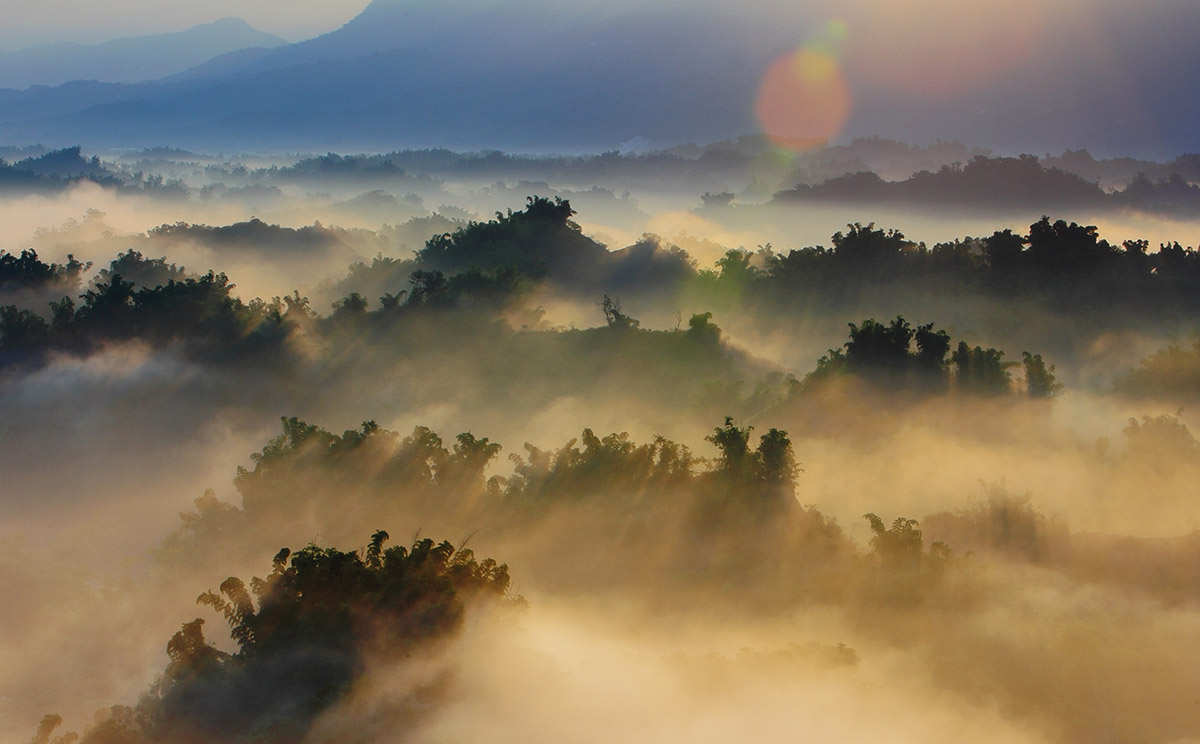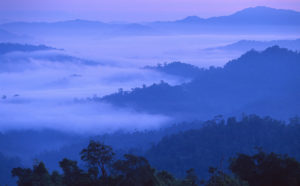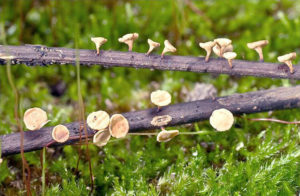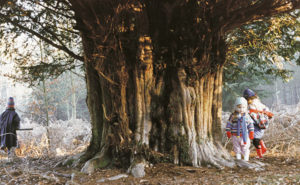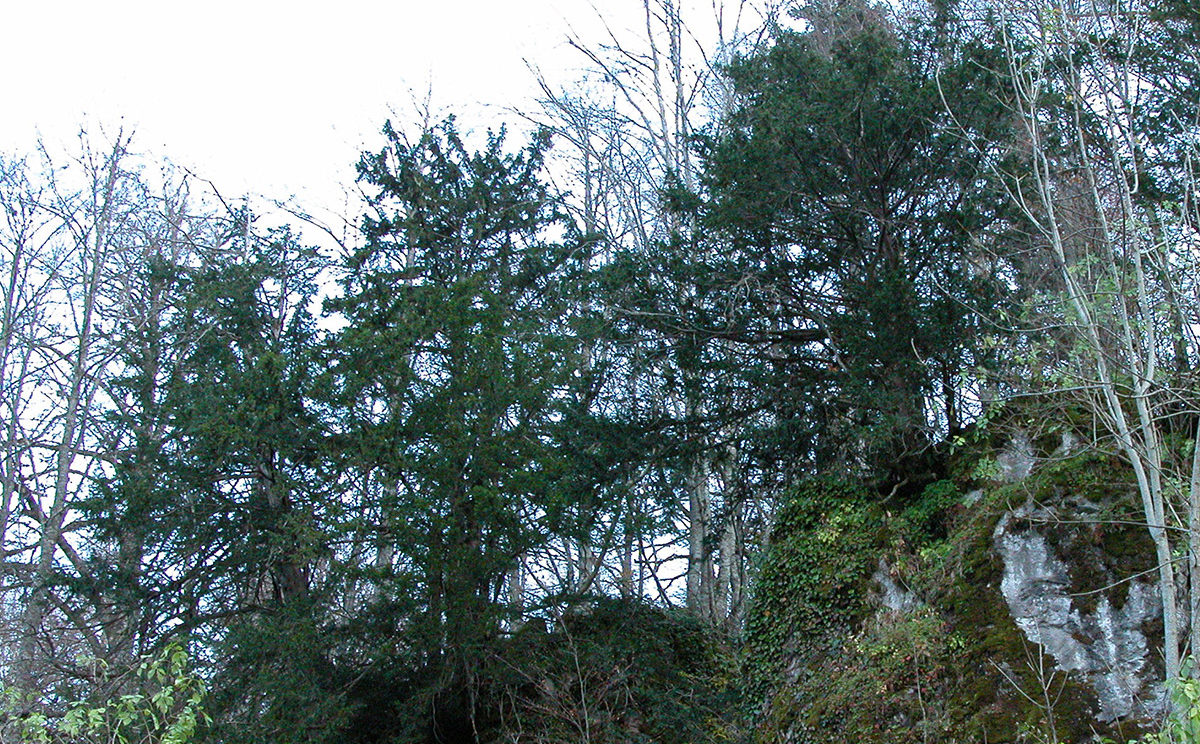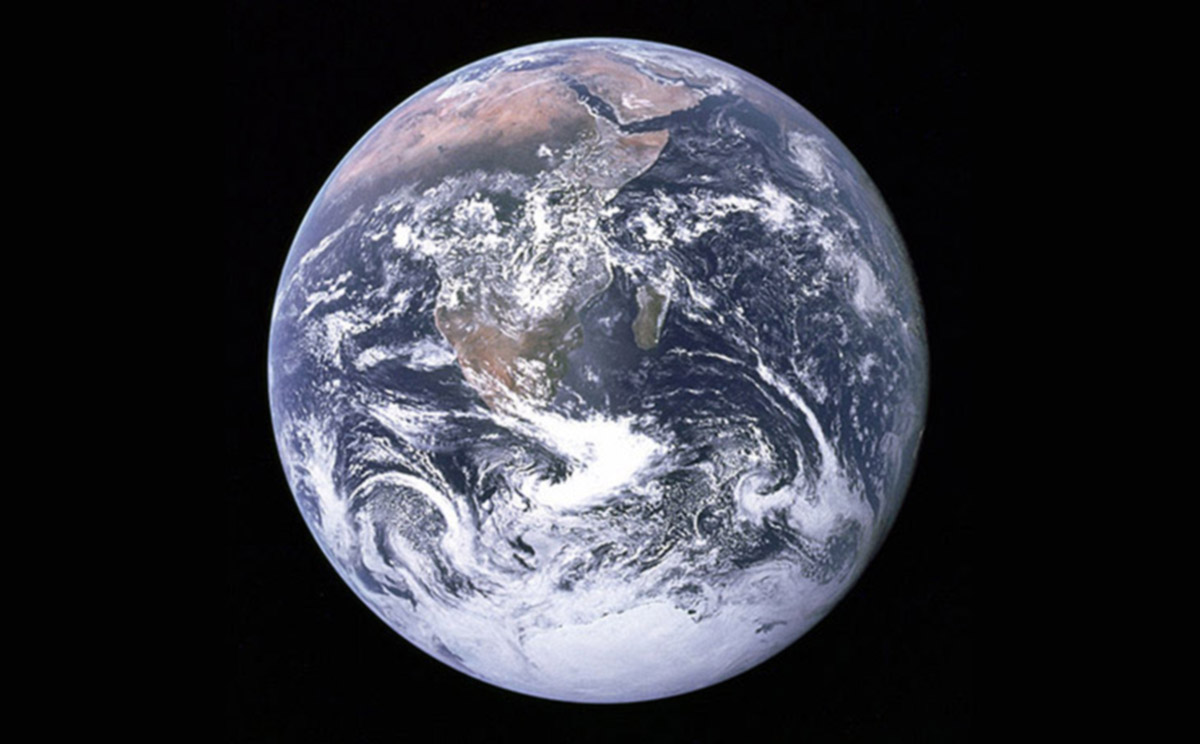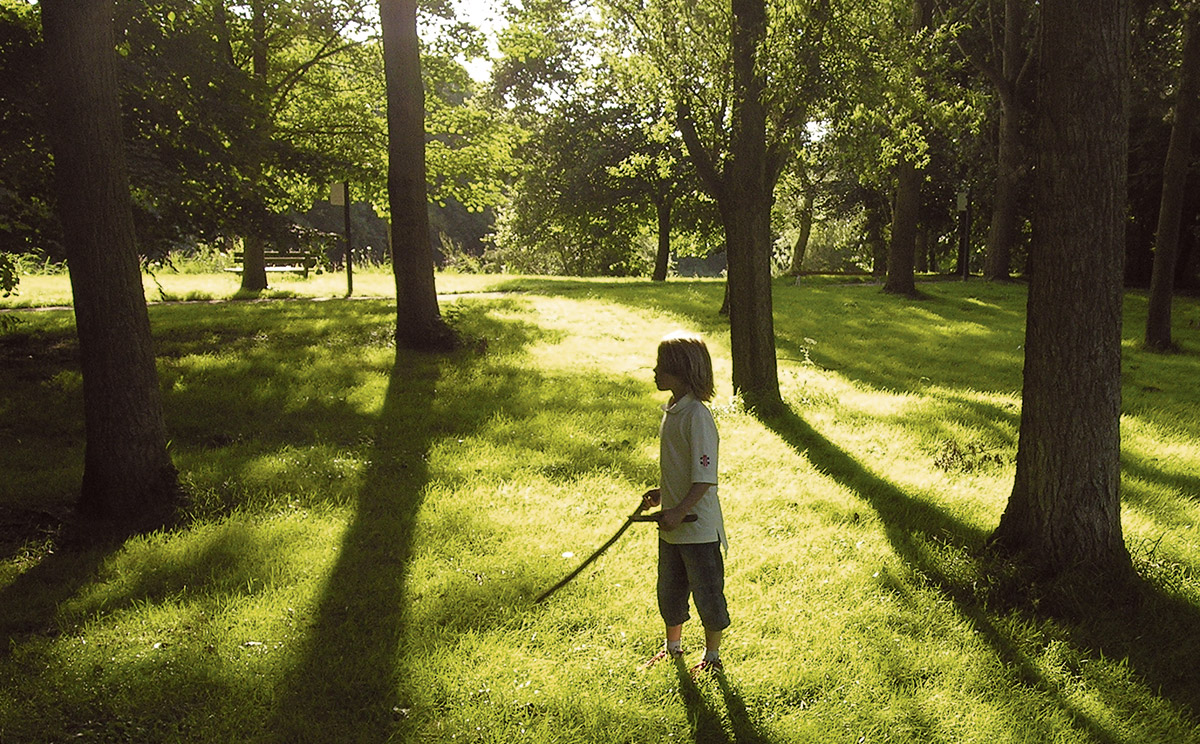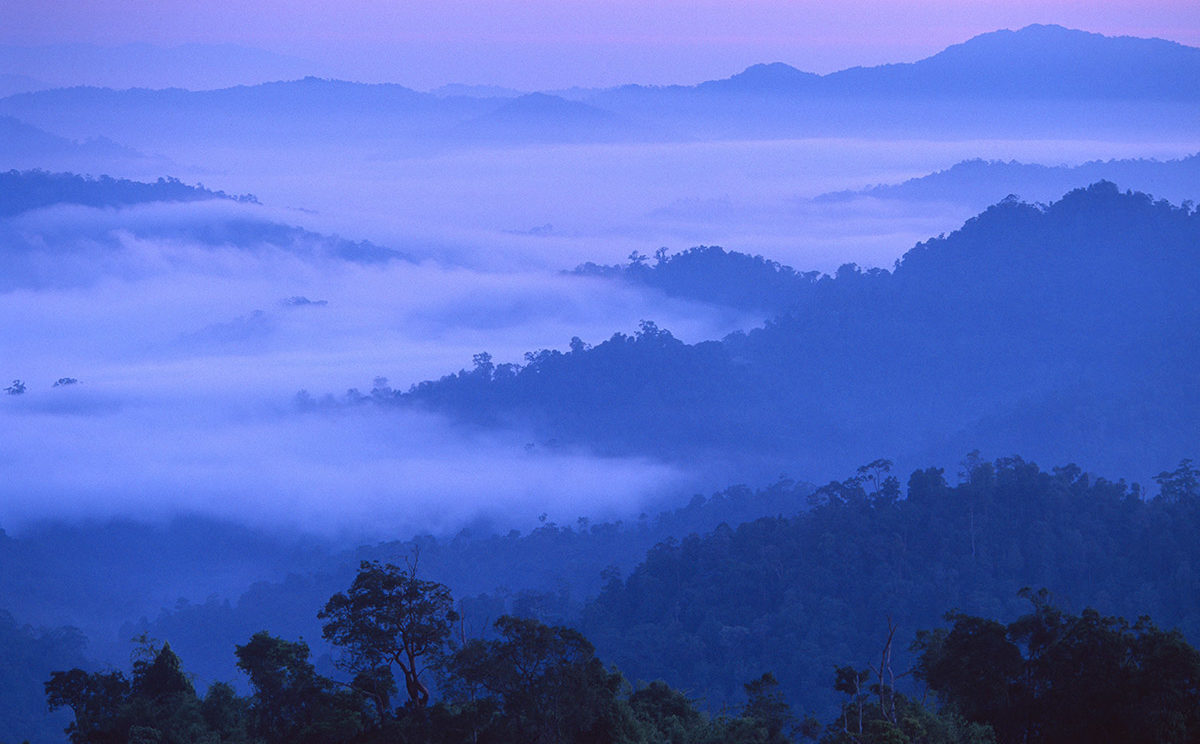Trees for Life – (1) The outside
Maintaining the water cycles
Collectively, trees are guardians, protecting all life on Earth, just as a single tree offers us refreshing shadow under the summer sun. Collectively, as forests, they are an essential organ for the metabolism of Earth’s biosphere.
Forests offer a habitat to countless plant and animal species and hence every woodland, however small, defeats the human notion of ‘survival of the fittest’ (which has notoriously haunted our society since the 19th century, when it was promoted mainly for social and political reasons).
In Nature, everywhere, we can observe the tendency for cooperation rather than competition. Even in the subatomic world particles don’t stay separate but ‘team up’ to form greater structures. Atoms in their turn couple to form molecules and, in the biological dimension, these are organised into complex living beings. In the landscape countless animal and plant species constitute biotopes, while in the macrocosm planets, stars and even galaxies group to make up vast systems with their own rhythms and information exchanges.
Trees work as mediators between the subatomic, the molecular, the energetic and the interstellar realms. They bring the best of all these worlds into the living biosphere. With its teamwork and intelligent adaptability, the natural mixed woodland is the most essential manifestation of the character of planet Earth. Where water or mountain altitudes allow for it, forests have been the dominant ecosystems for hundreds of millions of years.
It began when life left the ocean and conquered the landmasses of our young planet. Early ecological communities had to develop the ability to attract water. The problem was that rain clouds from the sea rain off within a few hundred kilometres from the coastline. Life on land needed an active ‘mechanism’ to transport moisture further inland. Such a continental irrigation system originated on land in the course of biological evolution and took the form of… forest.
Forests are responsible both for the initial accumulation of water on continents in the distant past and for the stable maintenance of the water supply ever since. The secret is that tall plants (trees) pump up so much water from the ground and evaporate it through their leaves that the air above woodlands is saturated with moisture. New clouds can form – not ocean-born but ‘wood-born’ – and drift further inland.
In this way, the Amazon rainforest recycles the rain from the coastal belt five to six times until it reaches the Andes on the other side of the continent, some 4,000km away. The Amazon rainforest creates about twice as much water vapour as the neighbouring Atlantic Ocean (!).
Effect on climate
The vast amount of energy which is needed for the evaporation comes from the sun, and the total energy turnover of the Amazon Basin (seven million square kilometres) alone equals the energy of fifteen 15-kiloton bombs going off every second, day and night, all year round. As a by-product of the continental photosynthesis, the Amazon produces over 20 % of the world’s oxygen.
However, why climate scientists still ignore this powerhouse as an active player in world climate is a mystery though. One reason might be that plants as such are conventionally seen as passive victims, never as active initiators. But this picture has begun to shatter.
For example, forests do not just happen to produce water vapour and then leave it to itself. High moisture alone does not lead to clouds. Droplets cannot form without condensation nuclei for the water molecules to dock onto.
Recent studies [1] have shown that trees release chemicals called terpenes that do exactly that: provide condensation nuclei to actively speed up cloud formation. The particles released by pine forests, for example, double the thickness of clouds some 1,000m above the forests. These clouds will carry life-giving rain elsewhere, and on their way reflect sunlight and cool the Earth.
Balancing the atmosphere
Yes: trees help cool the planet. Forests are a vital part of Earth’s temperature regulation system. As the sun continuously increases its heat output (like every ageing star), Earth has to adjust its climate from time to time. Over billions of years it did so by removing carbon dioxide from the atmosphere, and this process was taken to unprecedented heights during the Carboniferous period, some 300 million years ago, when ancient swamps and forests buried megatons of carbon in the ground (part of what we excavate today as fossil fuels).
Wood consists of about 50 % pure carbon! One cubic metre of dried oak wood contains 360kg of carbon for which the tree filtered 2640kg of carbon dioxide from the air; the weight difference was released by the leaves in the form of oxygen.
Forests not only benefit life on land, they are closely coupled with marine life, particularly algae – the other great biological engine of climate control. But sea water is not particularly rich in nutrients and this can limit algal as well as plankton growth in any region.
Forests have a positive influence on ocean ecology and biodiversity. When tree leaves decompose, they share their nutrients not only with the local land plants but some nutrients are washed away by rain and eventually, via the rivers, enter the ocean where they help fertilize plankton and algae. If you think this is obscure see the United Nations website and look for the Japanese fisherman Shigeatsu Hatakeyama who runs an oyster farm on this principle and received a Forest Heroes Award for his campaign ‘Forests are Lovers of the Sea’.
On the other hand, the sea holds something that is rare on land: the vital plant nutrient sulphur. Intact primeval forests, however, don’t have to stay waiting. They can release certain chemical messenger substances that will run down the river and stimulate algal growth in the sea. The algae release a substance called dimethyl sulfide into the air which acts as cloud condensation nuclei. The rain from these clouds contains sulphur compounds and thus, the trees get their sulphur via ‘mail order’. So much for ‘passive’ plants.
Electric matrix
But life processes aren’t about chemistry alone. The atmosphere, as well as living beings, have an electrical charge. Earth’s surface has a negative electrical charge while the ionosphere is positively charged. Plants are electrical conductors because of their sap flow, and trees continually discharge the air electrical tension into the ground. A role which is highlighted every time that lightning strikes a tree.
The electrical currents form an energetic bridge between the inorganic nutrients of the soil and living plants. The cells make use of the laws of electricity when absorbing their nutrients. The ‘electrical life of trees’ was first measured in 1925. Between 1943 and 1966, the well-respected Yale neuroanatomist H.S. Burr recorded the bio-electrical fields of an elm and a sycamore. He found that…
• tree potentials vary from 0 to 500 millivolts
• trees show a daily rhythm – low in the morning and peaking in the afternoon
• trees show an annual rhythm with a minimum in April and a maximum in September
• the bio-electrical field of trees reacts sensitively to changes of light, of air electricity, to the phases of the moon, and even to changes in the Earth’s magnetic field as well as the 11-year cycle of solar magnetic activity. [2]
As for ‘sensitivity’, add that botanists from the Russian Academy of Sciences found an 807-year-old juniper, the tree rings of which reflected the four supernovae that occurred during the tree’s life span. This suggests that no star in our galaxy can die without trees perceiving and recording it. [3]
Another long-term study of the electrical currents of trees was conducted by the Czech scientist Vladimir Rajda. He measured hundreds of plants and trees, in different countries and continents, between 1969 and 1989. Because the electrical flow reflects the bio-chemical metabolism of a tree, he was able to develop a system to determine the biological health of a tree by simply taking a measurement. Rajda’s work shows that each species has its own characteristics, and suggests that to an extent, plants are capable of self-regulating their energy flow. [4]
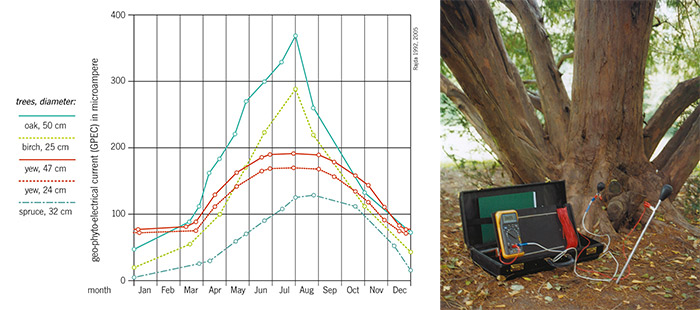
Fig. 2 (right): Rajda’s simple measuring device
There is more to the atmosphere than the eye can see. It is a law of physics that every electrical conductor creates an electromagnetic field around itself while an electrical current flows through it. The electromagnetic fields of trees are low but not insignificant. And parallel conductors amplify each other, if their currents run in the same direction. They do in a forest (downward), and on a planetary scale, billions of trees create an electromagnetic field. It has been suggested by an independent German researcher, Rainer Fischer, that this even helps to maintain the Earth’s magnetic field – which shields us from cosmic radiation. [5]
Earth’s magnetic field
The conventional, purely geophysical theory to explain the existence of the Earth’s magnetic field has its contradictions. If it is generated by the ‘geodynamo’ alone, why then is the Earth the only planet in the solar system with a significant magnetic field?
Why do the declination lines in reality differ so much from the theory? Why is the magnetic north so far from true north and why is the area of highest intensity located thousands of miles away from the North Pole, above the large woodland cover of Siberia? How can the northern hemisphere have a second area of highest intensity, above the forests of Canada (or what remains of them)? Why is the third area of highest intensity located above the Amazon? What effects do forests have on the Earth’s magnetic field?
No one has any answers. Yet trees have always been low on the agenda of science funding. It is just more profitable to invest research money into ‘square’ tomatoes or other highly profitable crops than into trees, which ‘grow anyway’.
Intact forests are active players in Earth’s climate control but fully admitting this would threaten well-established structures in science and politics. This will not change while the same governments – practically all – that fund meteorology and geophysics make direct or indirect profits from deforestation.
Benefits to human health
Forests act as water filters in Nature, even capable of cleaning up various forms of toxic waste. Trees achieve this by cooperating with a dense community of microbes around their roots that biochemically clean water in exchange for nutrients, a process called phytoremediation.
Furthermore, trees prevent soil erosion, harmonise the air electricity and stabilise the ground water table. A healthy forest ecology prevents forest fires and wide-scale flooding alike. Human populations benefit from all these points. Already thirty years ago, the ecologist Frederic Vester calculated that for all the ‘communal’ work that trees perform, the value of a living tree is about 2000 times that of its timber.* [6]
* [However, this insight has by now degenerated into the wider concept of ‘ecosystem services’, at least recognized by economists but at the same time a new symptom of hubris which deems the human race the crown of creation with an inherent right to massacre and plunder everything else.]
Trees release various chemicals, some of which are beneficial for the environment; some are also beneficial to us humans because they are anti-bacterial, anti-fungal or anti-viral.
The positive effects of trees on human health have been known for a very long time, particularly in Japan with its old custom of ‘forest bathing’ (Shinrin-yoku). This does not literally mean bathing but simply spending time in the woods, bathing in the forest air.
Over the years, the Department of Hygiene and Public Health in Tokyo has funded many studies into this subject. [7] It has been confirmed that breathing in volatile substances called phytoncides (essential oils), which are anti-microbial organic compounds derived from trees, invigorates the human organism.
Forest time reduces the level of stress chemicals in the body, boosts the immune system and hence helps to ward off viruses, bacteria and even tumours. Studies with children have shown that three days in the woods strengthens their immune system measurably for more than 30 days! [8]
In Britain in 2001, the Department of Health sent out information material to all health authorities and hospitals, pointing out the health benefits of trees. It stated that if bedridden patients can see trees they ‘need less pain-relieving medication, they are better patients and they need to stay in hospital for a shorter period of time, so surrounding hospitals with trees can improve both healthcare and economic efficiency.’ [9] It was also recommended to involve patients in tree-planting. ‘Trees will also make staff feel less stressed.’
Counteracting city pollution
Trees counteract air pollution in cities. A 2008 study by researchers at Columbia University found that children living on tree-lined streets are less likely to develop asthma. This study was conducted in New York City, where the leading cause of hospital admission for children under the age of 15 is asthma. [10]
Since more trees in urban neighbourhoods seem to correlate with fewer cases of asthma, and New York City counted about 500,000 trees outside of parks and private land in 2008, the Million Trees NYC tree-planting initiative developed, under the umbrella of the New York Restoration Project founded by actress Bette Midler. [11]
This, I believe, is the way forward: citizen initiatives. We cannot wait for governments to do the work for us. We have to wake up, act with love, and show respect where respect is due. We have to protect our trees and forests – and plant more of them!
Article by Fred Hageneder in Caduceus 86, summer 2013
Go to Trees for Life – Part 2: The inside
References:
1. Poehlker, C., 2012. ‘Biogenic potassium salt particles as seeds for secondary organic aerosol in the Amazon’. Science; 337:1075-8.
2. Burr, HS, 1972. Blueprint for Immortality. The Electric Patterns of Life. Neville Spearman, London.
3. Hageneder, Fred, 2000/2017. The Spirit of Trees, Floris Books, Edinburgh, p.47
4. Hageneder, Fred, 2007/2011. Yew – A History. The History Press, Stroud, p.68
5. Hageneder, F., 2000/2017, op cit, pp.36-9.
6. Vester F., 1985. ‘Ein Baum ist mehr als nur ein Baum’ [A tree is more than just a tree]. Der Baum in Mythologie, Kunstgeschichte und Gegenwartskunst, Hg. Hans Gercke, Edition Braus, Heidelberg
7. Li, Q. et al, 2007. ‘Forest bathing enhances human natural killer activity and expression of anticancer proteins’. Int J Immunopath Pharmacol.; 20(2): 3-8
8. Li, Q., 2010. ‘Effect of forest bathing trips on human immune function’. Environ Health Prev Med.; 15(1): 9-17. See US NCBI PubMed
9. Tree News 2001; 2: 17. See National Urban Forestry Unit (UK)
10. Akre, J, 2008. ‘Trees may cut asthma – NYC study finds’. The Legal Examiner National News Desk, May 1, 2008.
11. million trees nyc
